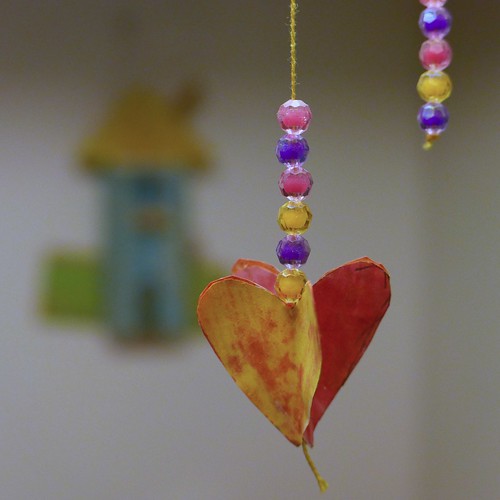Here are two closeups taken with the Panasonic LX100 yesterday night. It was already dark outside when I fetched the camera from the Smartpost parcel point. Setting it up took some time, so I didn't have much time yesterday to test the LX100.
By the way, the shooting experience piece at Dpreview is to be recommended, it gives quite a nice description of how the LX100 feels in use. Richard Butler also refers to the LX3, which was the camera that really got me started with photography.
My first digital camera was the Canon Digital Ixus 400, which was good enough but not really inspiring. And my first camera was the Olympus XG-1 SLR, which was good, but that was a long time ago in the age of the 35 mm film. With the LX3 and the LX5 I took altogether over 389000 photographs, and with the Ixus 400 some more, so that I have crossed the threshold of 400000 photographs taken with a digital camera.
When I switched on the LX100 for the first time...
Well, at first a couple of words about how the camera was packaged. There was a thick pile of user guides in various languages, a cd (which I haven't looked into yet), and cables, battery, charger, etc. It took a little effort to find the string which fastens the lens cap to the camera, and some time to charge the battery, and install a SDHC card, but then I was ready to go.
When I switched on the LX100 for the first time, the click was satisfying, and I didn't need to look into the manual at all. Not that I would have done it anyway, "try it out" is my motto. The lens extends out really far - and it turns out that the lens cap is fixed to the part that extends, so having the lens cap on doesn't prevent the camera from turning on. The string is conveniently just long enough for this.
Speaking of the on-off switch, the camera is really easy to turn on, but switching it off takes some practice, and may not be so easy with gloves on. That remains to be seen. But all the controls felt well made, robust, and probably they will be quite durable in use.
The LCD is good and provides a nice amount of information, and the colors seem to match what you see on the computer. But I haven't used the LCD in daylight yet, this remains to be seen.
The controls feel natural, at least if one has used a SLR or a DSLR, but they are different from the LX3 and LX5 so that it will take some time to get familiar. For zooming I have mostly used the zoom switch, not the ring around the lens, but this may change in time.
I did a little bit of tweaking of the settings, and here I must say that a touch screen would be great to have, using the buttons felt a bit counter-intuitive in some places. But I soon got used to the way one should navigate through the menus.
I tried to use the wifi for transferring the photographs to the iMac, but this didn't work yet; I guess I have to look into the user guide here. I tried giving the wifi password to the LX100, but it didn't manage to connect. In the end I transferred the photographs by using a SDHC card reader.
Update: I managed to set up a wifi connection using the instructions given by Arago at Dpreview forums.
For the photographs so far, I have been using the normal film mode, dropping saturation down by -1 and sharpness by -1. There are all kinds of filters one could use (including dynamic b&w), but I haven't looked into this yet.
It was dark outside when I did a little walk with the camera, so I used higher ISO settings, typically 3200, which doesn't seem to make much of a difference in terms of noise.
And by the way, the camera is really silent when you put it into the silent mode, which I like a lot. The only noise you hear is very low, due to focusing. I think I'll continue using this setting.
And speaking of focusing, this camera is really fast. In fact, focusing happens almost without lag. The difference compared to the LX5 is rather dramatic. Well, I must admit that when I went outside and it was really dark, focusing close proved to be difficult, and handheld macro shots didn't work, but that wasn't a surprise. If there was a little bit of light in the frame, focusing was immediate for subjects a little bit farther away.
The camera fits into coat pockets, but there is enough size and weight difference to feel in the handling, compared to the LX3 and LX5. My initial feeling is that I like the size and weight, but I may have to shop for coats with somewhat bigger pockets in the future.
I tried out the EVF, which at first seemed to be somewhat difficult to use. But now I'm growing into it. In fact, it may be that I will take most of the photographs using the EVF, it is that good. Have to see how it works in daylight situations.
Yesterday I ordered a second battery, one made by Duracell, which should be compatible, at least I hope so; the price difference was remarkable compared to Panasonic originals. Also, I ordered a class 10 SDHC card to be able to import the photographs faster into the computer; my old class 4 card is too slow given the number of photographs I'll probably take with the LX100.
Well, what else is there to be said. I have started going through the settings of the camera, and there are plenty of things to be explored. I need to check out how the focus point setting and focusing in general works, as there are a lot of alternatives. I haven't tried out manual focusing yet either. Also, it may be that I need to fine-tune the film mode to get the look I want to have, even though the results are promising.
Also, custom settings are available, and I started using them. I set custom settings as the function of the fn2 button to make it easy to change between the settings C1, C2, C3 and none. Currently I have ISO 1600 normal color settins in C1, ISO 1600 b&w in C2, and ISO 200 normal color settings in C3. Also, the fourth setting is not using custom settings, as the camera also remembers the way it is set up.
The logic of the camera is different from the LX3 and LX5 because of the dedicated controls for aperture, shutter speed and exposure compensation, but I think I'll soon adapt. I will be using aperture priority mostly, but I need to remember to change exposure compensation when needed.
I have put up the live histogram and guidelines on the display, and this seems to work well. There is also an electronic level, which I set up in fn1, but it may be that I won't be using this much.
It will take some time to get used to the camera, and to the look of the photographs. But my first experiences of taking photographs in the dark yesterday evening suggest that using IS0 3200 is not a problem. Or in fact, ISO 3200 is the solution, meaning that I will be able to take handheld photographs at 75 mm equiv. even when it is dark outside.
The LX100 is at least three stops better that the LX5 is when shooting in the dark. This is promising given the long dark winter months we have now ahead here in Finland. The image stabilization seems to work well, so it may be that ISO 3200 is even a bit too high.
Also, it seems that there is more room for tweaking the ISO 3200 jpeg files than there ever was at ISO 400 with the LX5. Not that I'm interesting in doing a lot of post-processing, but sometimes it helps to lighten up the shadows a bit.
(Posting title is from the poem Advertisement by Wisława Szymborska, translated By Stanislaw Baranczak and Clare Cavanagh.)





No comments:
Post a Comment